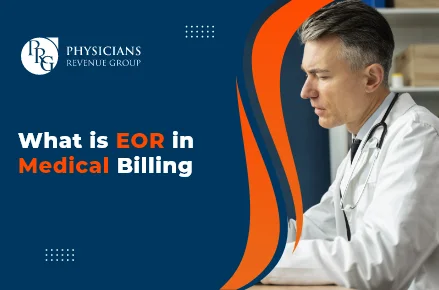
Email: info@prgmd.com | Call: +1 (630) 242-6474
Business hours: 9:00 to 5:00 | Monday to Friday
Email: info@prgmd.com | Call: +1 (630) 242-6474
Business hours: 9:00 to 5:00 | Monday to Friday

Table of Contents
ToggleAccounts receivable inside revenue cycle management refers to the total money owed to a healthcare provider for their rendered services – which are yet to be collected. The A/R denotes outstanding payments from patients, insurance providers, and third-party payers. Accounts receivable backlogs occur when the receivables are not collected within the agreed-upon or expected timeframe. Mounting account receivable backlogs can indicate issues in a practice’s cash flow and collection processes.
In a complex healthcare industry with multiple regulatory changes and monetary hurdles, efficiency in managing healthcare accounts receivable backlogs is vital to maintaining a healthier cash flow and financial stability.
Efficient management of A/R is an essential element of medical billing services. The AR cycle revolves around tracking and collecting owed payments –all promptly. The entire process has many steps, including:
Submitting medical bills
To assess overall financial health and identify improvement areas, a healthcare practice needs to measure days in the AR. It is one of the key performance indicator (KPI) that shows the average number of days it takes for payment collection.
Outsourcing AR ensures that your practice receives monthly or weekly AR aging reports per your specific requirements. The AR aging report, or a report that breaks down the number of debts. Furthermore it shows how long they have been outstanding – helping understand what accounts are delinquent and for how long.
Lastly, these reports can help you avoid problems with habitual late payers and allow you to meditate with collections. Furthermore you can even discontinue providing services to mitigate credit risks.
Precise management of accounts receivable backlogs in healthcare includes careful handling of several reports associated with insurance, collection analysis, write-offs, bad debts, reviews, and ratio analysis. The AR process includes insurance contract analysis–determining whether the healthcare practitioners are getting adequately reimbursed. Thus, relying on a medical accounts receivables management provider can make or break your healthcare practice’s financial operations.
Through outsourcing to a professional AR services provider, your practice can:
Share:
Categories
Recently Added

What is an ABN in medical billing?

What does a Clearinghouse do During Claims Submission?

What is EOR in Medical Billing?
We Would Love to Assist You!
We treat your data confidentially and don’t share any information with a third party.